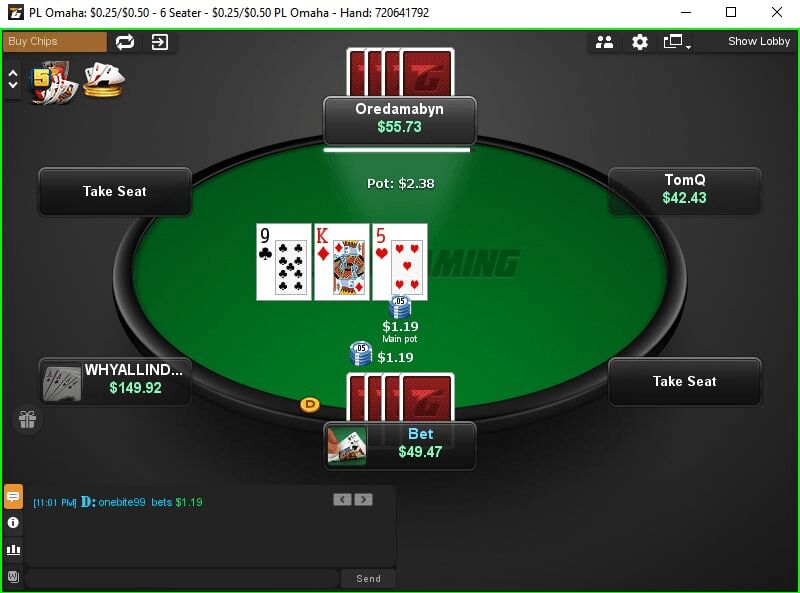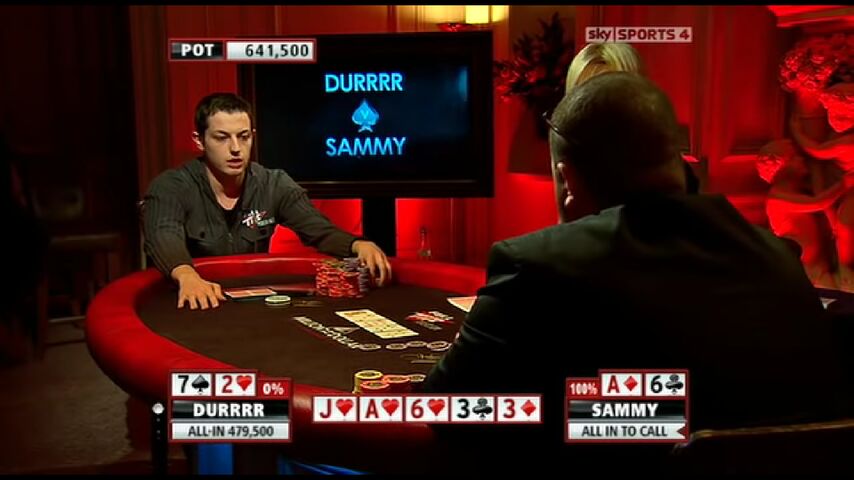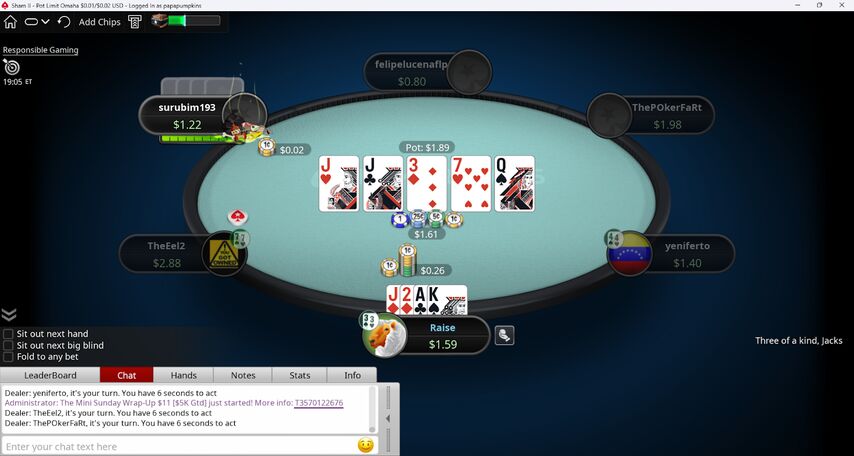Passive poker players let their opponents control the action and prefer to check and call, rather than raise. It’s not a style of poker you should adopt; instead, it’s better to play passively at certain times, like trapping an opponent when you have a strong hand. If you’re playing passively too often, your opponents will exploit it.
Professional poker players understand that being passive is not a winning strategy, though it might be optimal for some scenarios.
Here’s a short guide on passive poker, including how to get more value from passive opponents and why you shouldn’t be a passive player.

Note: If you want to know how to play passive poker, keep in mind that this isn’t a recommended style of poker. Experienced opponents will take advantage of passive players and exploit them by playing aggressive poker.
Loose-Passive vs Tight-Passive Poker
Passive poker can be broken down into two main categories; loose-passive and tight-passive. Neither of these strategies will create winning poker players over a long period because passive players will shy away from large pots and action.
Most of the players you find at micro and low-stakes online poker tables will fall into these two categories.
Loose-Passive: These players enter lots of pots, but rarely with aggression. They prefer to call, see a flop, and continue when they make a strong hand combination. They’ll fold more easily than experienced players, even when they have the best hand.
Loose-passive players lose a lot of chips by calling preflop far too often. They’ll enter lots of pots in the hopes of making a strong hand, but they’ll often fold postflop.
Tight-Passive: These players prefer to play hands that are at the top of their range. That includes pocket pairs, premium hands like Ace-King, Ace-Queen, Ace-Jack, and suited connectors (10-9, 9-8, 8-7, and so on). If they “miss the flop” and fail to make a strong hand combination, they usually won’t continue when their opponent bets.
Tight-passive players are fairly predictable, so they won’t get a lot of action, especially when they make a premium hand combination. When a tight-passive player continues to call bets on the flop and turn, it usually means that they have a strong hand. This sets off alarm bells for the other opponents, allowing them to avoid losing chips.

In general, poker players become more balanced as they get more experienced, adopting a more aggressive style. Poker rooms like TigerGaming are absolutely full of passive cash game players at the lowest stakes. For Texas hold ‘em and Omaha, the stakes are between $0.05/$0.10 and $5/$10. It’s common to see a tight-passive style in their low buy-in tournaments, but most of the traffic is on the cash game tables.
See a list of the game types, tournaments, and bonuses in our TigerGaming review.
How To Play Against a Passive Poker Player
In general, passive poker players are less-experienced. Most seasoned poker players adopt a tight-aggressive or loose-aggressive strategy once they become more familiar with the game.

It’s easier to bluff a tight-passive player. It’s more likely that a loose-passive player will call your raises, just to see more community cards in the hope of improving. On the other hand, a tight-passive player hates to call raises and risk having worse cards than their opponents. This risk aversion will cause tight-passive players to fold too often.
Adjust your preflop strategy. Passive players love to limp into pots (a poker term for calling preflop instead of raising) and you can exploit this. By choosing your spots carefully, you can raise your passive opponents off better hands. You can also create more value for yourself by making well-sized raises and exploiting their tendency to call with worse cards.
Note: Finding the correct preflop strategy is much easier with a poker tool like ICMIZER 3, which is a powerful tool for tournament hand analysis and preflop play. For postlfop situations, we recommend Flopzilla in the GipsyTeam Shop.
Isolate the passive players. In the right scenarios, get the passive player all to yourself by making an isolating raise. If your raise is sized slightly larger than usual, you might fold out other players and get to play a heads-up pot against your passive opponent. Loose-passive players are more likely to call these isolation raises, even if their hand isn’t strong enough. Tight-passive players are less likely to call large raises, so always think about your “customer”.
Avoid passive players when they are strong. If your passive opponent continues to call your bets and/or raises, it’s time to re-think your strategy. Anytime you see a passive player demonstrating non-passive behavior, it’s a huge red flag.
When you’re playing online poker, you want passive players at your table. Loose-passive players will donate their chips to aggressive opponents and tight-passive players will give you opportunities for profitable bluffs. Three of the best sites for passive players are 888poker, PokerStars, and GGPoker.

You’ll find many of these passive recreational opponents at PokerStars cash game tables between $0.01/$0.02 and $0.10/$0.25. Above those stakes, players tend to have a more balanced and aggressive strategy.
Test out the player base for yourself by downloading the PokerStars software. You can test out all the games with free chips first and switch to real money whenever you’re ready. Stars offers a $30 Freeplay Bonus for all new players, plus other rewards. We cover everything about this site in our PokerStars review.
Passive vs Aggressive Poker
It’s not controversial to say that aggressive poker is the perfect counter to passive poker.
Passive poker players will fold too often to aggressive players. A passive player will win pots when they make a strong hand combination, but they’ll lose value in many other situations.
Balance is an important part of poker that passive players rarely give much thought to. Aggressive players mix bluffs, mid-strength hands, and premium hands into their arsenal, but a passive poker player is more “face-up”. This means that they play fairly standard and predictable poker; calling when they have something, folding when they don’t, and so on.
There are plenty of poker tools that are built for this purpose. Mixing the right amount of mid-strength and strong hands into your range is what programs like Flopzilla train players to do. Tools can speed up the learning curve and show players profit-maximizing strategies with a few clicks of a button.
The GipsyTeam Shop is stocked with preflop tools, heads-up displays, equity calculators, GTO solvers, and other useful aids for every aspect of poker.




























